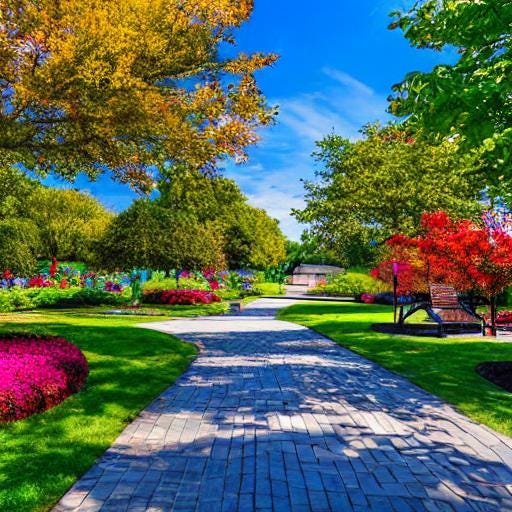The Hidden Gem of Everyday Greenspaces
Our World Changing Parks and Their Potential
Let me share this secret.
Public parks, unlike most other pieces of city infrastructure, influence people to see and experience the world differently, and at the same time, they allow their users to create change in their community. From their everyday use, to interaction with others, to the planning and installation of park features, people in a park shape a place.
You may not often think about how your park (or lack thereof) came to be (or not), but its design was a tangible outcome of somebody’s view of what your neighborhood should be. The process that shapes these greenspaces tells us a lot about the communities that build and use them.
It’s imperative to understand that while there are countless benefits to quality park spaces, there are plenty of detrimental unintended consequences for parks that are not thoughtfully designed. Or whose planners have priorities that don’t fit with those of the communities they serve.
The good news is that today, most public and private funding sources require community involvement in park planning. This means that to receive money, planners must have meetings, public input sessions and websites, or other meaningful ways of reaching out to the public. In some scenarios, they must use more in depth resident input in their designs or even work together with residents and to plan a space.
While not every planner or designer does this well, it at least means the opportunity to influence decision making in park planning is there for those who take it. Sometimes, the public just needs a little help finding those opportunities and understanding how the power they have fits into the logistics of city government. When they do, the whole community benefits from a more holistically designed park and a more active citizen base.
For those who become involved in park design processes, the experience can be a powerful gateway for them to be involved in their local government. If people show up to give input in planning processes, proactively form groups caring for greenspaces, and demand environments that support locals, they flex their citizenship muscles. They learn more about the logistics of seeing through a mission in city government, and they meet people in their community who help make projects happen. Unsound or unjust processes for park development become more difficult to hide and more of a liability for local governments.
In these ways, I believe that in shaping parks, we can help to reinvigorate citizenship and curtail government corruption.
A Doctorate for Parks
In grad school at Virginia Tech, I studied community building, specifically the shaping of places through parks and greenways. My goal was to learn the best ways to be a capable and ethical practitioner. I created a theoretical framework for evaluating and developing parks for sustainable development with a requisite of involving a comprehensive network of stakeholders in the process.
When I graduated, I went to work putting that theory into practice working as a park planner in city government. I made it my mission to plan parks collaboratively with residents and to institute planning practices that ensured that parks would be equitably managed long after I left.
In doing so, I learned about what to do, what not to do, and what nonsense to look out for from those who might not have a community’s best interest at heart. This site is an attempt to share that knowledge and to continue to find positive, healthy ways to build community and community leadership through engaged citizenship.
Let’s create a community of park advocates.
Parks are political. Where they are located, who they serve, and the way in which they interact with their surroundings are all factors that showcase their political and bureaucratic governing systems. This can make some aspects of our common greenspaces controversial.
Luckily, they also can serve as a common ground. While many people have no interest in getting wrapped up in the quagmire that is local government (I don’t blame them), many residents are passionate about the playground down the street or the greenway that makes their community walkable. They can find common ground with neighbors who also want beautiful, healthy spaces
Everyone, and I mean everyone, has a stake in parks. A park, depending on its details, can be a conduit for health and wellness, environmental resilience, food security, education, art, history and healing from historical harm, economic development (or protection in the face of it), and of course, recreation. The list could go on forever.
I’d be hard pressed to find a person with no use for a local park, and it's a good thing. Parks need vocal and involved advocates, as do communities. In this online space, we can support one another as we work to make our local neighborhoods, towns, and communities better fit our collective needs.
We’ll examine, learn, and call out injustice together.
Cities, towns, and states are constantly building and rebuilding with parks and greenspaces. Often, there is conflict or at least a hearty debate about how this should happen.
In this blog, I’ll examine park-related discussions or controversies and talk about the meaning behind the headlines and important takeaways from each case. I’ll also talk about significant park features and their potential meaning for a community. I love looking at how parks can meet resilience and community building goals, and we will look at unique solutions people are coming up with to meet those needs.
I’d love to hear about what’s happening in your local community and talk about your hopes and frustrations with local greenspaces. Together, we may find avenues for you and your fellow stakeholders to influence your landscape.


